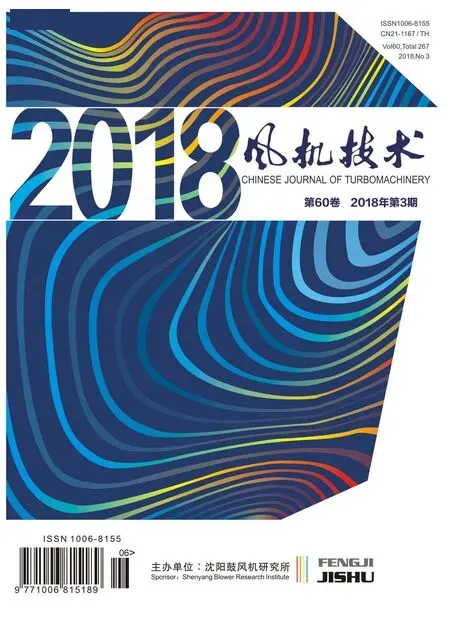轴流压气机从失速到喘振瞬间过程:激波管模拟和试验比较
2018-07-13
(海巴多能技术有限公司)
Nomenclature
CW(surge)compression waves
EW(surge)expansion waves
HSHPhigh speed high pressure
MMach number
ρgas density
pabsolute static gas pressure
PRstatic pressure ratio
Qflow rate
γratio of specific heat for air
Runiversal gas constant
RW(surge)reflected shock wave
SW(surge)shock wave
Ttemperature
ΔUinduced reverse flow velocity
Vflow velocity
Wspeed of shock wave
1 Introduction
1.1 HSHP Ratio Compressor Instability and Observations
Atlow volume rates,virtually alldynamic compressors exhibit a variety of instability events ranging from rotating stall inception,either by the spike or modal wave,to stallcellformation and eventualflow breakdown in the form of surge.
A simple argument by Emmons(1955)[1]gives an explanation for rotating stall as illustrated in Figure 1.After a spike is initiated,the blockage caused by the stalled cell,assuming only covering one cascade cell in its inception,leads to an increase in the blade incidence on the cell right to stall next and reduction on the incidence of the left cell to get it out of stall,hence forming a pattern of rotation.Note that as zones of stalled cell propagate tangentially,blade passages cyclically stall and recover or in other words,flow within blade passage is rapidly turned OFF and ON by the fast moving stalled cell.
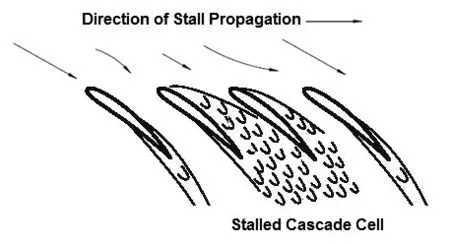
Fig.1 Rotating spike to stall mechanism,Emmons(1955)[1]
Spike stall inception,the prevalent of the two observed types,is characterized by localized'spike like',nonlinear finite-amplitude disturbances with wavelength of one to two blade pitches and circumferential phase velocity of 70%~80%of rotor speed.As experimentally discovered by Day&Freeman(1994)[2],this initial spike rapidly grows in size until to the extent to trigger an abrupt transition,as shown in Figure 2,to a much larger stall cell that is rotating slower(20%~50%of rotor speed)and running straight through stages axially.For an aero engine,this large-scale fully developed stall zone could occupy half the annulus and rotating at half the rotor speed,a dangerous'locked-in-stall'situation difficult to get out according to Cargill&Freeman(1991)[3].
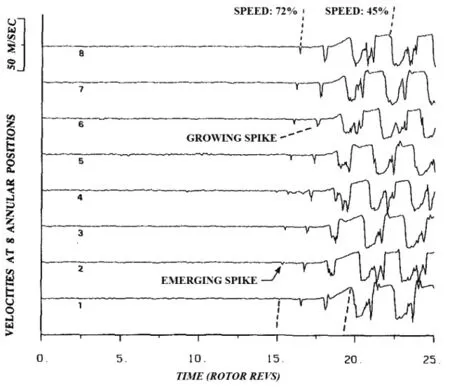
Fig.2 Spike to stall development,Day&Freeman(1994)[2]
The most violent compressor instability is surge at high speed and under high pressure ratio.As observed by Mazzawy(1980)[4]on a 12-stage modern gas turbine engine,surge typically initiates from the rear stages of the compressor with an internally generated high-amplitude shock wave travelling upstream and expansion waves travelling downstream,followed by reversed flow as shown in Figure 3.He described that sudden stoppage of flow within several blade passages could start this transientprocess.The dramatic resultsare vividly illustrated by a loud bang followed by spewing out of flames from both the engine intake and exhaust,as illustrated in Figure 4.A repeating surge cycle may not occur because the flow reversal is so vigorous that combustion is extinguished,i.e.,flame-out occurs.The resulting structural loads in excess of steady state levels may cause dangerous blade vibrations or even breakage.A well known example is the US Airways Flight 1549,an Airbus A320,which was landed on the Hudson River of New York City on Jan 15,2009 after completely lost thrust from both engines due to severe compressor surge.
The knowledge of the strength and propagation pattern of the surge shock wave are of fundamental importance not only to the engine itself but to the supersonic inlet as well because surge is often the limiting inlet structural load condition according to Marshall(1974)[5],Kurkov(1975)[6],Young(1974)[7],Miller(1996)[8]and Evans(1975)[9].
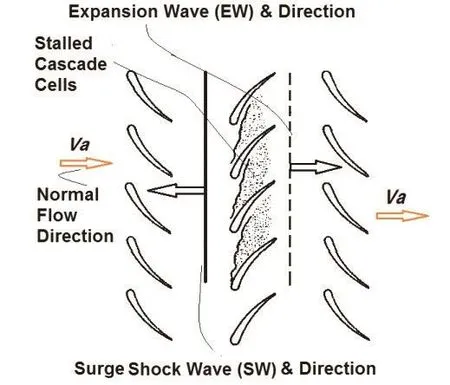
Fig.3 Surge onset with shock&exp.waves
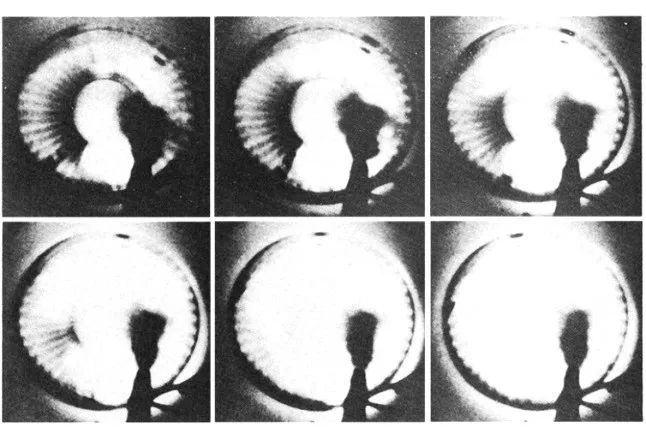
Fig.4 Resulting surge asymmetry by flames at engine inlet
1.2 Surge Cycle and Transient Phase Modeling and Limitations
For a perspective view,the sequence and time scale of a typical surge cycle for large transport engines is shown in Figure 5.The transient phase of flow reversal is the fastest shown on top of the cycle,dominated by the initiation of the surgeSW/EW(shown in Figure 3)and the resulting loud bang at the compressor inlet.It is followed up by the longer blowdown(depressurization)phase initially characterized with the flames spewing out(inlet flame is shown in Figure 4)and then the subsequent flow resumption and repressurization of the engine.
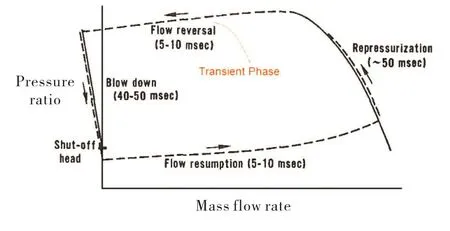
Fig.5 Sequence&time scale of a surge cycle,Mazzawy(1980)[4]
So what's the dynamics that could explain the observed transient process from stall to surge?Emmons mechanism as shown in Figure 1 only explains the kinematic behavior of rotating stall formation.A well established model by Greitzer(1976a,1976b)[10-11]has been widely used with the B-parameter to distinguish a rotating stall from surge to model the overall compression system instability.However,it fails to model the flow reversal phase of a surge cycle due to its transient nature.
This paper will pick up from where the previous researchers have left off and focus on the transient phase of surge cycle.It is particularly aimed at explaining the following questions:What exactly triggers surge to take place?What is the physical nature of surge:is it a movement of waves or induced fluid flow or both?More importantly, how to model the transient surge quantitatively so that the strength of surge shock wave and flow reversal can be calculated?
1.3 A Transient Approach:The Shock Tube Analogy
To address these fundamental questions without getting into complicated math,an analogy approach is taken in this paper.Analogy is a diversionary cognitive process and its essence can be illustrated by quoting Newton's saying:'like effects in nature are produced by like causes'.It correlates and transfers information from a known'source'(shock tube burst process in this paper)to the unknown'target'(transient process from spike to stall or surge).Historically,especially before the emergence of the modern digital computer,it played a significant role in problem solving in science and technology Holyoak(1996)[12],such as by Newton in comparing a planet motion to a stone throwing with greater and greater force on earth,and in Rutherford-Bohr model of the atom with the solar system or by Franklin in likening lightening with the Leyden jar.The effectiveness of this method depends largely on how closely the premises of an argument claim are correlated between the source and target.Analogy as a methodology has been greatly advanced by Hesse(1966)[13]from a classical four-term analogy to become an effective scientific modeling method called MaterialAnalogy.
The shock tube analogy was first proposed and used by Huang&Yin(2013,2014)[14,15]in analyzing the transient behaviors from rotating stall to surge.The selection of the shock tube as the source is primarily because its physics is clear and easy to visualize yet well established over the years from analytical,experimental and numericalstudies.Secondly,the experimental observations of the existence ofnonlinear finiteamplitude spike triggering stall/surge by Day&Freeman(1994)[2]and high-amplitude shock waves by Mazzawy(1980)[4]during a violent surge in high-speed highpressure ratio compressors closely match the criteria of Hesse's MaterialAnalogy;hence justify nonlinear transient shock tube rather than small disturbance based methods.The results will be compared with experimental observations and data from Day&Freeman(1994)[2]and Mazzawy(1980)[4].
2 Transient Dynamics From Stall To Surge:A Shock Tube Analogy
Refer to Huang&Yin(2013,2014)[14,15]for more detailed description of the shock tube analogy with stall/surge.Only major results are highlighted here so that they can be understood in context when compared with experimental observations and data later on.
2.1 Introduction to Shock Tube
Shock tube,invented in 1899 by French scientist Pierre Vieille,is a device used to study the transient aerodynamic phenomena under a wide range of temperatures and pressures for a variety of gases.It has been studied extensively by researchers from the start of the last century and has effectively served the developments of the supersonic and hypersonic flights,and a range of transient devices such as pulse-jet engines and wave rotors for gas turbine topping or as an automotive supercharger called Comprex as summarized by Mueller(2006)[16].However,the physical phenomena observed in shock tube and the well established shock tube theory have thus far not served for examining hence revealing the transient dynamics from stall to surge of turbo compressors in general.
An ideal diaphragm-triggered shock tube as shown in Figures 6a-6b from Anderson(1982)[17]and Rudinger(1969)[18]is a tube in which gases at low pressure p1and high pressure p4regions are separated by a diaphragm.This diaphragm then suddenly bursts open at t0=0+,shown in Figure6b,which producesa seriesof compression waves(CW),each increasing the speed of sound behind them so that they quickly coalesce into a shock wave with strength of(p2-p1)propagating into the low pressure gas,as illustrated in x-t wave diagram and pressure distribution in Figures 6c-6e.The shock wave increases the temperature and pressure of the low pressure gas adiabatically when sweeping through at shockwave velocity W and also induces a flow in the same direction with a slower velocity U.Simultaneously,a fan of rarefaction(expansion)waves(EW)of strength of(p4-p2)travel back into the high pressure gas decreasing its pressure and temperatures.The interface separating the low and high pressure gases is referred to as the contact surface(CS)which travels at the same velocity U as the induced flow both upstream and downstream.
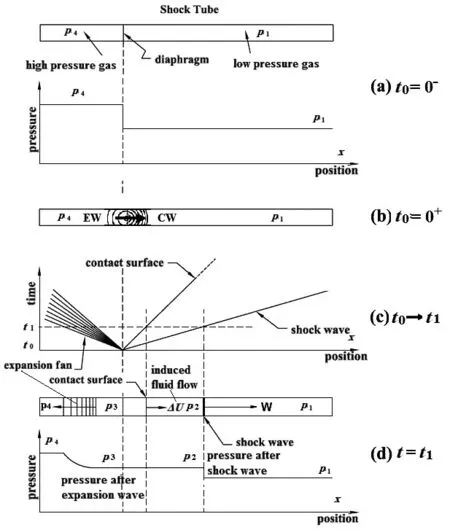
Fig.6(a-d) Diaphragm triggered shock tube wave diagram and pressure distribution
The analytical solutions for the shock wave and shock tube were available more than a century ago,thanks to independent efforts by W.J.M.Rankin and Pierre Henry Hugoniot,etc.The key results are rederived and summarized byAnderson(1982)[17]:

Whereγis the ratio of specific heats,cis the speed of sound that is equal toγRT.Equation(1),known as the Shock Tube Equation,gives the incident shock strengthp2/p1as an implicit function of the diaphragm ratiop4/p1for known gas types.While Equation(2),known as the Rankine-Hugoniot Equation,relates the abruptly arisen pressure of the shock strength(p2-p1)to shockwave speed ofW,initial gas densityρ1and induced flow velocity ofU.It should also be pointed out that theCWandEWvalues obtained from Shock Tube equations(1)and(2)are the maximum possible strength that could be achieved assuming zero diaphragm bursting time.
Take note the transitional behavior shown att0=0 in Figure 6:absolutely no flow and wave att0=0-but both are generated instantly att0=0+.The two conditions sufficient to trigger this transient behavior from static to dynamic are:the existence of an adverse pressure gradient Δp=p4-p1>0 and sudden opening of a valve that separates the gases with that pressure difference.The diaphragm is a special type of valve that has a very short burst time∆t(=t0+-t0-).
2.2 Close/OpenFluidValveinTurboCompressor
A traditional mechanical open/close valve is a device that starts or stops the flow of a fluid media inside a pipe by opening or closing its passageway.It has long been observed that fast opening or closing valves inside a pipe could trigger transient phenomena such as gas hammer or water hammer characterized by non-linear waves and induced fluid flow.Unlike the positive displacement compressors that rely on various open/close valves in its compression cycle,there is no mechanical valve involved within a dynamic compression cycle.However,a situation resembling the close/open valve function could exist inside a cascade cell or a turbo compressorasawholeatthemomentwhenthe instantaneous net through-flow rate is approaching zero.
As shown in Figures 7a and 7c for a diverging flow element with an adverse pressure gradient(Δp=p4-p1>0),it is both'fluid and pressure open'(Figure 6a)when there is a net through-flow and both'fluid and pressure closed'(Figure 6c)when there is no net through-flow due to a total mechanical obstruction or isolation,say by a mechanical valve.However,there could be a'fluid closed while pressure open'situation,as shown in Figure 6b,at the instant when fluid suddenly stops flowing(e.g.as in Figure6a,thethrough-flowrateQ→0instantaneously)yet without any hardware obstruction.
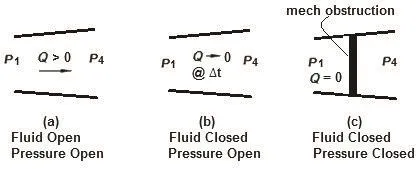
Fig.7(a-c) Fluid and pressure open/close valves
In other words,when a flow suddenly stops flowing inside a diverging flow element without any hardware blocking,a fast'close-open fluid valve'is thus formed that is closed to fluid at that instant(since instant net through-flowrateQ=0)butopenstopressure(sinceΔp≠0)and subsequent fluid flow if the zero-flow condition cannot be sustained.The fast'close/open fluid valve'is thus equivalent to a suddenly opened mechanical valve from its closing state as shown in Figure 6c.This likening immediately suggests a possible shock tube mechanism for initiating stall or surge from a rotating'spike like'disturbance when shock tube diaphragm bursts open.
2.3 CascadeStalltoSurge-ShockTubeAnalogy
As first experimentally discovered by Day and Freeman(1994)[2]as shown in Figure 2 and lately reviewed by Tan&Day(2010)[19],the stall inception process prevalently starts with a'spike like'localized disturbance which grows in size as it rotates around the annulus and quickly turns into a fully developed stall cell.The circumferential phase speed with which the emerging cell moves around the annulus changes from an initial 72% of the rotor speed when the cell is small to approximately 40% of the rotor speed when fully developed.
How to explain this transitional phenomenon?As shown in Figure 8a,a single cell between two adjacent blades is taken from a cascade and defined as a basic cascade element in this paper.From Day&Freeman’s observation(1994)[2],an ideal'spike like'disturbance,as depicted graphically in Figure 1,can be represented as a single cell initially only partially blocked with spike velocity∆V=V1-V0(Figure 8a),and rapidly grows in size to become a fully blocked cell(Figure 8b)as the transient net through velocityV0=0.
Under the zero through-flow condition,a rapid'close-open fluid valve'would thus be instantly formed at the stalled cell as discussed in the last section and its'rapid'valve action comes from the fast rotating speed of the spike(70%~80%of the rotor speed)that is jumping rapidly from one cascade cell to another within∆t(=t0+-t0-).Acted together with the existence of an adverse pressure gradient across the cascade Δp41,this zero through-flow condition is linking the phenomena of rotating stall cell to the shock tube at the moment just before and after the sudden diaphragm bursting as illustrated in Figures 8b-8c.
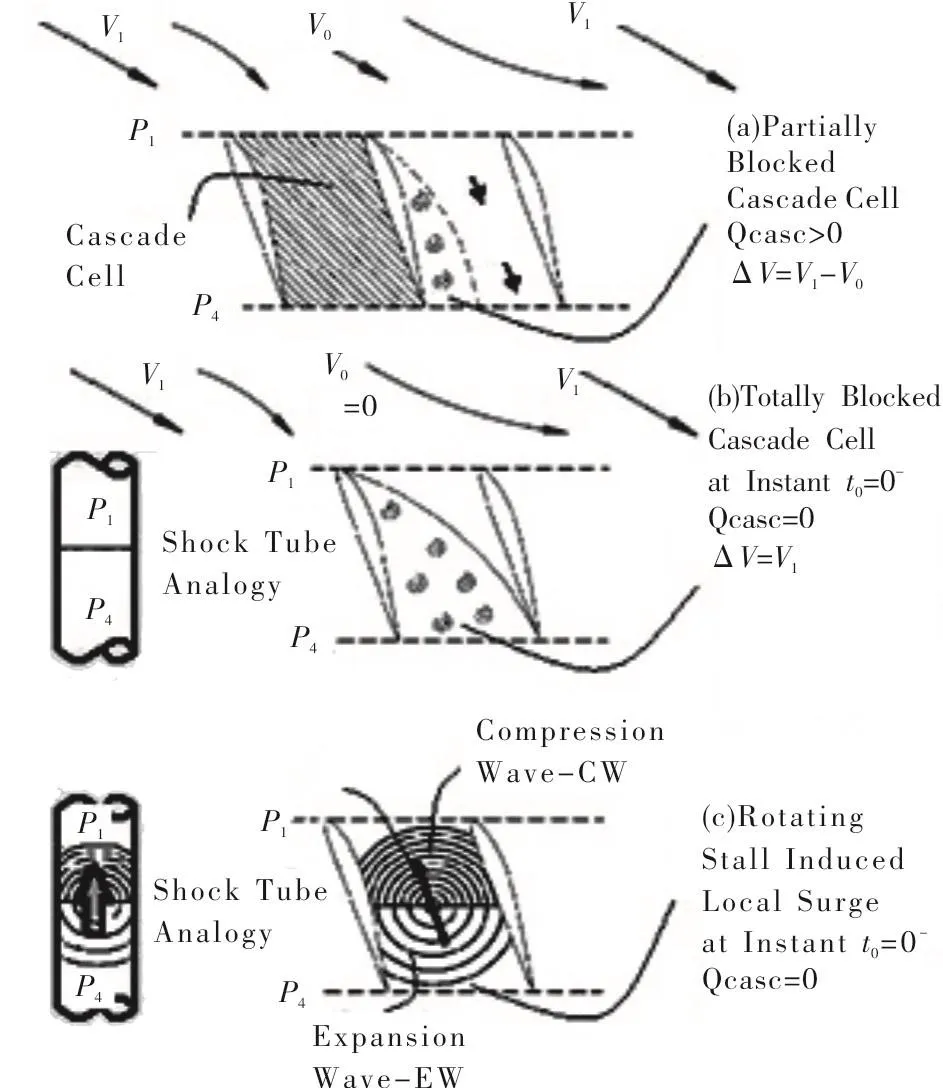
Fig.8(a-c) Single cascade cell triggered surge analogy
So an analogy between the shock tube and single blocked cascade cell is established when the net throughflow velocityV0→ 0 within an instant∆t(=t0+-t0-)inside a cascade cell with an imposed pressure rise Δpcasc[=(p4-p1)casc]>0.This implies that what happens after the diaphragm bursting can be applied to the single blocked cascade cell due to having fulfilled both sufficient conditions(the existence of pressure difference and sudden exposure of that pressure difference)in the analogous reasoning with the shock tube.Therefore,the well established results of the shock tube can be readily applied to examine hence reveal the transient process from a rotating“spike like”disturbance to stall or surge of a dynamic type compressor without the need to solve any non-linear differential equations.
Now let’s take a new look at the transitional process from rotating spike to stall or surge for an axial compressor in light of the single cascade cell stall to surge analogy.The suddenly blocked cascade cell at the instant of zero through-flow as shown in Figure 7b att0=0-and Figure 8c att0=0+resembles the moments just before and after the diaphragm bursting of a shock tube as shown in Figure 6a and Figure 6b.A series of compression waves that would quickly coalesce into a shock wave(SW)and a fan of expansion waves(EW)would be generated inside the blocked cascade cell travelling upstream and downstream simultaneously,while inducing a reverse fluid flow(IRFF)asSWandEWsweep through.
This mechanism could result in a scenario as observed experimentally by Day and Cumpsty(1978)[20]in a low speed three stage axial compressor that the poststall cells extended the full length of the compressor from the inlet of the first rotor to the exit of the last stator,indicating bi-directional nature ofSWandEWeffects.Moreover,the stalled cells are parallel to the axis of the compressor and did not spiral,implying the wave nature of propagatingSWandEWfronts are fast and in straight lines,not following the streamline of fluid particles.
In summary,a rotating spike with an instantly zero net through-flow for a cascade cell of a dynamic type compressor could trigger a localized stall or surge,consisting of non-linear bi-directional waves ofSWandEW,and an accompanying unidirectional backflowIRFF.Since all turbo compressors increase pressure from inlet to discharge through stages of rows of rotating and stationary cascades,they inherently generate a localized stall or surge at the moment of experiencing a zero net through-flow at a cascade cell.The key question is whether these local stalled cells would stay in a quasistable state as in case of“locked-in-stall”or could develop into a more powerful compressor surge?
2.4 Compressor Surge-One-Shot Shock Tube Analogy
If a cascade cell sized spike is the minimum instability element that triggers local stall/surge whenever experiencing a zero net through-flow,it could be further expected that the maximum instability would come in the form of violent surge as the net through flow of the entire compressor becomes zero instantly(Qcomp→0 in a single shot).This could happen during a massive blockage to the engine inlet by multiple bird strike or under high speed high pressure ratio conditions where the triggering time is the shortest and pressure gradient is the highest.
So an analogy between the shock tube and instantly stalled compressor system in a single shot can be established in a similar way as the single blocked cascade cell as shown in Figures 9a-9d.However,the pressure difference in this case is equal to the total pressure rise across the entire compressor Δpcomp.The instant zero mass flux postulate can also be justified by reasoning that there would always exist a zero net through-flow condition between a stable forward flow condition during normal compressor operation and an un-stable reverse flow condition such as surge.
It can be seen from Figures 9b-9d that the whole system of compressor and piping acts like a gigantic shock tube with the stalled compressor acting as the triggering“close-open fluid valve”while the high pressure system gas downstream and the low pressure system gas upstream are like high and low pressure regions of a shock tube.A shock wave(SW)would be generated within the stalled compressor travelling upstream.Compared with the single cascade cell triggered stall/surge,there isno three dimensional dispersing effect in this case due to the essentially one dimensional nature of the piping system,so the resulting surge could be severe involving the entire system with a re-enforced SW travelling upstream at the supersonic speed as shown in Figure 9d.Simultaneously,a fan of downstream going expansion waves(EW)and an induced reverse fluid flow(IRFF)are produced.
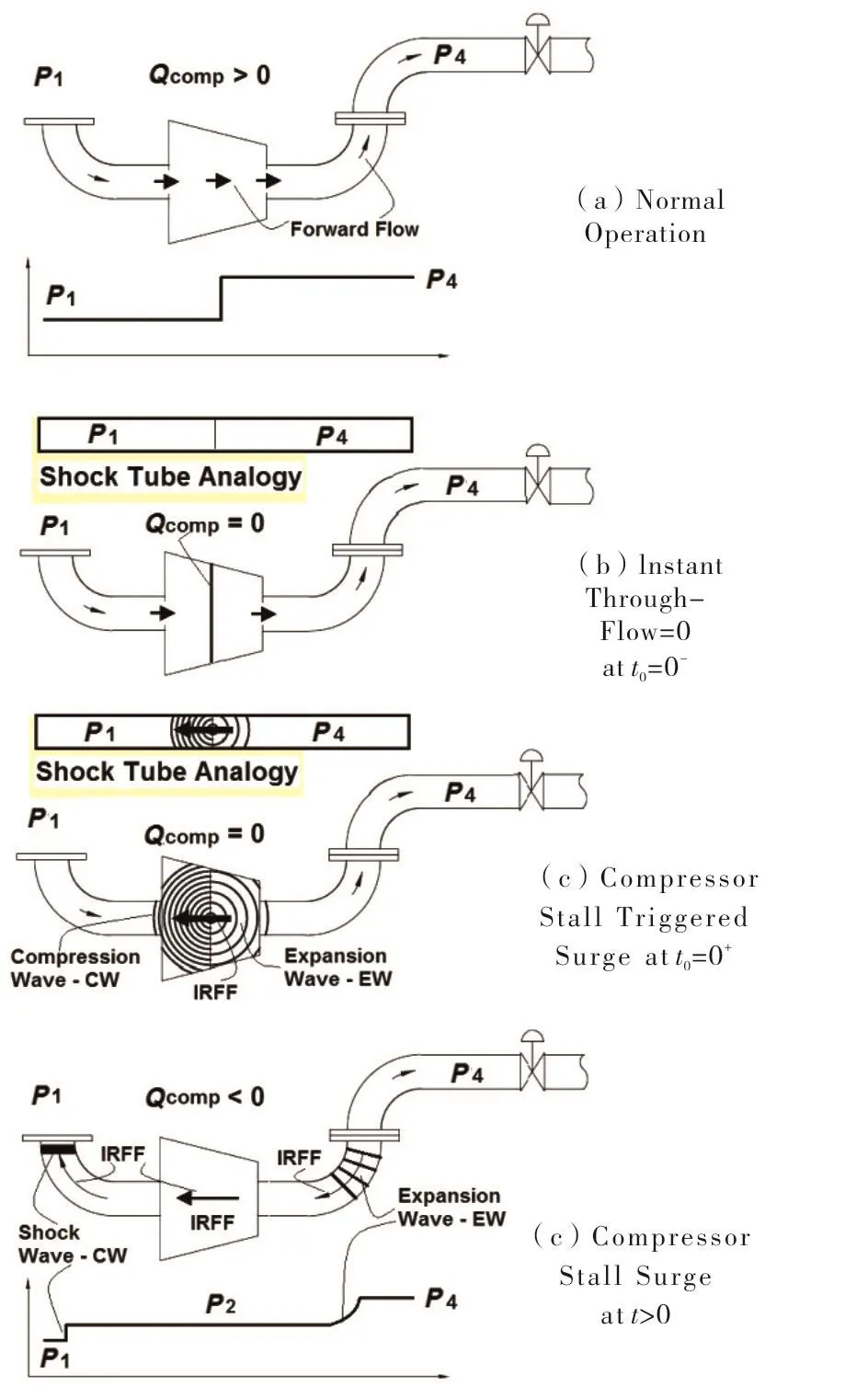
Fig.9(a-d) Compressor triggered(one shot)surge analogy
2.5 Progressive Surge-Multistage Shock Tube Analogy
To analyze different surge onset situations inside a multistage compressor,a progressive surge model was first proposed by Huang & Yin(2014)[15]using a progressively triggered shock tube analogy.The basic idea for the progressive surge model is illustrated in Figures 10(a-b)where a 2-stage axial compressor with 4 cascade rows is approximated by or analogous to a 4 diaphragm shock tube with each diaphragm(A,B,C and D)representing a cascade.The pre-surge continuous pressure and velocity distributions in axial direction shown in Figure 10a can then be approximated by segmented pressure and velocity distributions of a preburst shock tube either by the number of cascade rows(as shown in Figure 10b)or stages(as used in the calculation examples later).
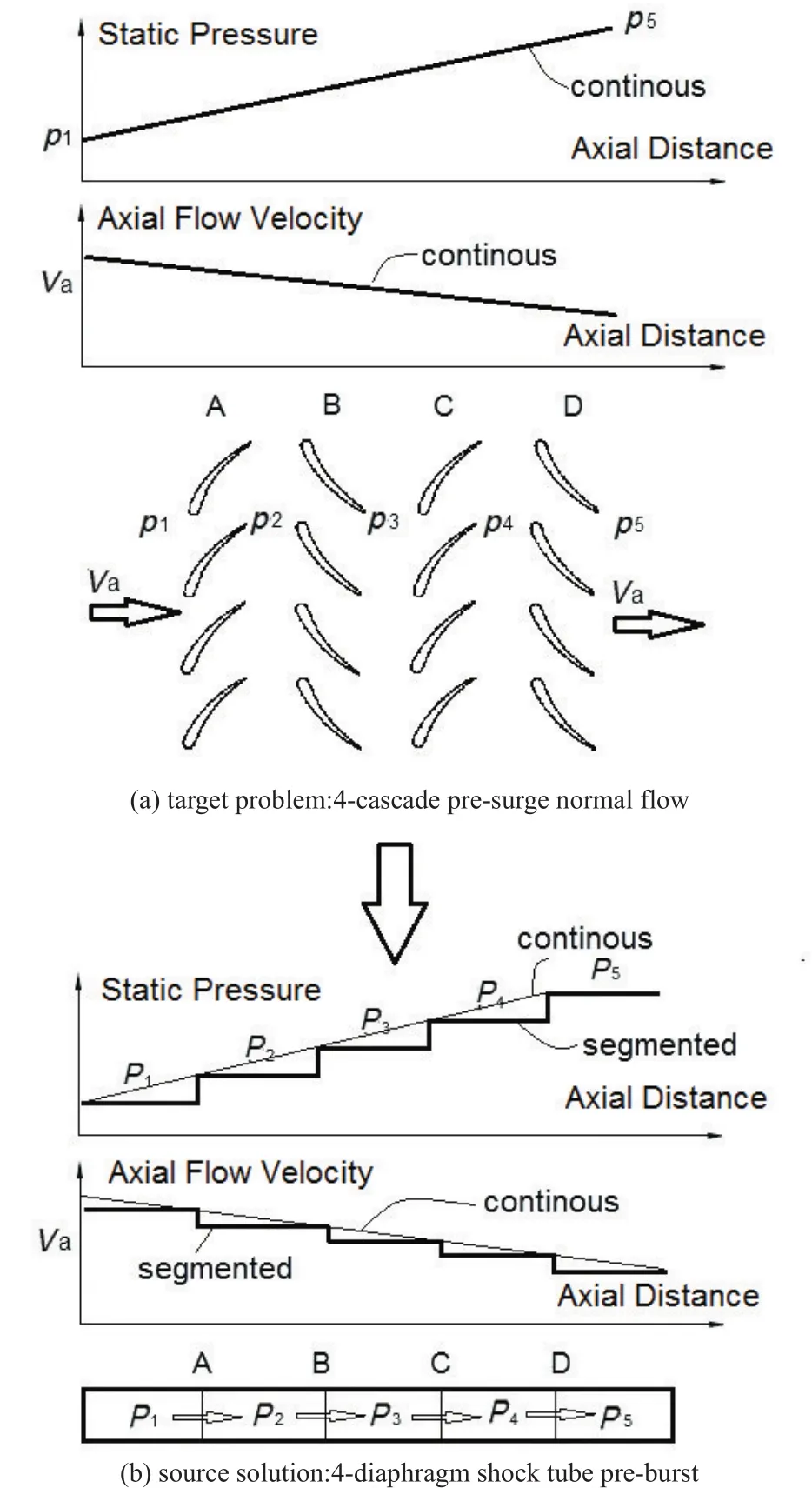
Fig.10(a-b) Progressively triggered surge analogy(sequential shock tube)
This model was elevated to a dynamic progressive surge model by Huang&Mazzawy(2018)[20](to be discussed in the experimental comparison below)where a multistage compressor will be simulated to include other dynamic effects such as a series of guillotine closures and reflecting walls,in addition to a series of stationary diaphragm shock tubes.
2.6 Transient Surge Rules for Dynamic Compressors
Forthe convenience ofeffectively using the analytical results of the shock tube analogy,the following Transient Surge Rules are summarized.In principle,these rules are applicable to different gases and for transient process from stall to surge generated by different types of dynamic compressors:
1.Rule I:For a cascade cell either moving or stationary inside a dynamic type compressor with a pressure rise fromp1top4,there would be no stall or surge if the net through-flow rateQ>0 is maintained for any cascade cell at any moment;
2.Rule II:If,within an instant∆t,the net throughflow rateQsuddenly becomes zero under the presence of pressure rise Δp41,transient surge is instantaneously generated at the location and instant of the flow stoppage as a composition of a fan of Compression Waves(CW)or a quasi-shockwave,an Induced Reverse Fluid Flow(IRFF)and a fan of Expansion Waves(EW)with magnitudes as follows:

whereρ1is the gas density at low pressure region,W the speed of the lead compression wave(CW),ΔU the velocity of Induced Reverse Fluid Flow(IRFF);
3.Rule III:Transient surge componentCWis the action force by downstream high pressure(p4)gas to upstream low pressure(p1)gas while surge component EW is the reaction force by upstream low pressure(p1)gas to downstream high pressure(p4)gas in the opposite direction,and their magnitudes are such that they approximately divide the pre-surge pressure ratiop4/p1equally.At the same time,CWandEWpair together to induce the third transient surge component:a unidirectionalreverse fluid flowIRFFin a fixed relationship ofCW-IRFF-EW.
Rule I is about the condition before stable fluid dominant flow breakdown.It also points out that the smallest instability element inside a dynamic compressor is a single cascade cell and the largest ever-possible instability event is the violent compressor surge in a single shot.In between,there exist numerous route-tosurge possibilities that could be modeled by progressive surge model.
Rule II is about the transient dynamics from stall to surge:that is,the relationship between fluid motion and forces at initial moment from a stall to surge and the transition from fluid flow to dual fluid-wave dominant nature.Moreover,itindicatesa rotating spike is anticipated to precede stall/surge in time and is just one of many conditions that could trigger a stall or surge.
Rule III shows further the interacting forces between the upstream and downstream gas at different pressure are mutual and in pairs so that for everyCWaction,there is always an equal but oppositeEWreaction in terms of equal pressure ratio.
The details and implications of these rules are to be explored in theirapplication and comparison with experimental findings below.
3 ExperimentalComparison&Discussion
3.1 Dynamic Triggering from Stall to Surge
The exact cause and chain of events leading to spike formation have not yet been understood so far as reviewed lately by Tan&Day(2010)[19]and is beyond the scope of this paper.Instead,our focus is on the transient process from stall to surge,and on the dynamics of how a grown spike or a sudden blockage triggers a stall or surge.
As discussed in more detail by Huang&Yin(2014)[15],Day and Freeman(1994)[2]conducted transient measurements on both low speed lab and high speed 8-stage Viper engine compressor at different speeds and one of their figures is re-produced here as Figures 2 and major findings are summarized as follows:
1)The spike,a localized,nonlinear finite amplitude disturbance,initiates stall and surge at all speeds with no modal disturbances being detected at any speeds;
2)At low speed,compressor would more likely stall than surge while at mid and high speeds would rather surge than stall.
Mazzawy(1980)[4]also observed on a 12-stage high speed modern aero engine compressor that surge typically initiates from the rear stages of the compressor due to a sudden stoppage of flow within several blade passages rotating around the annulus as depicted in Figure 3.
How to explain the above observations using the shock tube theory?According to Transient Surge Rules I&II,two conditions are needed for stall/surge initiation at a cascade cell:
a)The existence of a pressure rise in flow direction Δp41;
b)Withininstant∆t,thenetthrough-flowratesuddenly becomes zero across that pressure rise.
First of all,a positive pressure rise in flow direction is needed for any stall or surge to take place.So any fluid element with a pressure drop would not initiate stall or surge as in a nozzle of a turbine.Since both the impeller and diffuser of a dynamic type compressor increase pressure in its flow direction, 'condition a)'is automatically satisfied during normal operation.So only'condition b)'is left to be met to trigger a stall or surge.As first pointed out by Emmons(1955)[1],rotating spike or stall is a local blockage caused by a stalled cell as illustrated in Figure 1,thus is equivalent to'zero throughflow rate'for a complete blockage.The“suddenness”comes from the fast rotating velocity of stalled cell itself as confirmed experimentally by Day&Freeman(1994)[2]to be about 70%~80%of the rotor speed.The underlining physics is consistent with the triggering of a water hammer phenomenon that valve closing/opening time has to be fast enough.In other words,a spike rather than modal wave is more likely to initiate stall/surge because the sharpness of a spike is the same as the suddenness of a valve action.Hence,the higher the speeds of the compressor and pressure ratio are,the better trigger the spike will be and would result in a more violent surge action.This explains Day's other observation(1994)[2]that high speed compressor tends to surge instead of stall,as confirmed by Mazzawy(1980)[4].
On the other hand,the instant zero net through flow rate is functioning like a fast'close-open fluid valve'as discussed above.As stalled cell propagates tangentially,each blade passage is rapidly turned off and on by the fast moving stalled cell.Each'OFF'would result in a tangential cell movement,or rotating stall cell,as explained by Emmons(1955)[1]in Figure 1,while each“ON”would resume the cell flow.This would continue until a cell flow is completely stopped(OFF)and triggers stall or surge as shown in Figure 2.In other words,Emmons’s explanation only sees the kinematics of rotating stall while the shock tube theory explains the dynamics of how a spike triggers a stall/surge:the sudden opening of an adverse pressure gradient Δp41will further trigger a reversed flow in axial direction.This mechanism is also consistent with Cargill&Freeman’s conclusion(1991)[3]that any meaningful stall/surge coupling model should reflect the transitional physics at blade level,a prerequisite the Greitzer-Moore“lumped parameter”one dimensional model lacks.That is,a two dimensional event with tangential variation like a rotating stall,triggers a surge that is essentially one dimensional in axial direction.
The bird strike triggered surge mentioned at the beginning can now be partially explained:the sucked in birds would cause a sudden blockage to one or many cascade cells.It further suggests the bigger the birds are,the more dangerous due to a more massive blockage leading toQcomp→0.The failed engines of US Airways Flight 1549 were later found to be caused by striking a group of eight plus pound Canadian geese.
3.2 Nature of Transient Surge:Wave or/and Fluid Flow?
Now let's address the fundamental question raised at the beginning:what is the nature of surge:is it a movement of waves or induced fluid flow or both?The answer to this question is related to the transient dynamics of surge phenomena:what are the driving forces behind the violent surge motion?As deduced by the shock tube analogy,Transient Surge Rule II predicts that the nature of surge at onset is a composition of compression waves(CW)or a shockwave(SW),a fan of expansion waves(EW)and an induced reverse fluid flow(IRFF),just as observed by Day&Freeman(1994)[2]and Mazzawy(1980)[4]as shown in Figure 3.Moreover,the three differentcomponents of transientsurge are generated simultaneously as a homologous,inseparable whole and in a fixed formation ofCW-IRFF-EW.It is believed that this formation reflects the dynamics of the transient surge event with the wave frontsCWandEWas the forces driving the instant reverse flow IRFF in between.In turn,the source ofCWandEWis simply the re-distribution of the pre-surge compressor pressure Δp41that is now being suddenly released and turned into a force driving the flow in the opposite direction.Teamed together,they induce,by the pulling force ofCWat front and pushing force ofEWfrom behind,a unidirectional reverse fluid flow(IRFF).
It further suggests that a surge event after initiation would be very difficult to control because it’s not one but all three components that have to be dealt with,echoing the same conclusion that any attempt for a global scheme of active surge control must be considered unlikely.
In light of the shock tube theory,Figure 11 shows a typical compressor performance characteristic curve with different nature of flow regions.Conventionally,the design point when the instant Mach number through the cascade is 0<Mcasc<1,is dominated by fluid flow while on the far right,Mcasc=1 defines the choking point where a stationery shock wave is first formed in a cascade cell to limit the forward flow.But on the far left,Mcasc=0 reflects the transient stall/surge point when the instant velocity first reaches zero and the first moving shock wave is generated to drive the reverse flow.It’s interesting to see how two totally different types of shock waves can be generated inside a turbo compressor and represented by very different values of Mach number.A long held misconception seems to suggest that supersonic velocity is a pre-requisite for a shock wave generation.By shock tube theory,it is understood that moving shock waves can be produced by just suddenly opening two bodies of gas at different pressure.
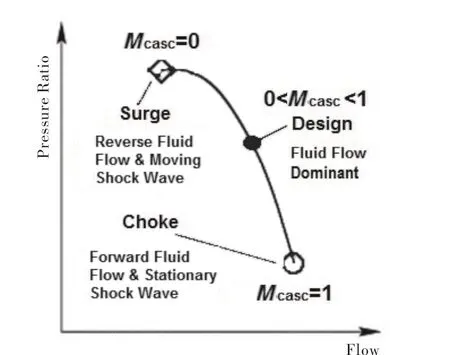
Fig.11 Different Shock Waves on Two Ends of Compressor Performance Curve
The implication of this physical picture is daunting:unlike the stationery shock wave that stays fixed relative to cascade,the moving waves,upon being generated inside a compressor,will bounce around in the form of waves in all directions at the speed of waves,and along the way inducing fluid flow,reflecting upon hard surfaces and potentially causing structural damage.This scenario was,in fact,vividly presented more than 37 years ago by Mazzawy(1980)[4],but had only limited impact.The challenge for future designers and researchers is to face this dire reality and to search for adequate tools in modeling the transient dynamics from stall to surge.
It should be stressed that the initial stage of surge is a local event initiated at blade level.It becomes system involved only after the generated CW-IRFF-EW begins to interact with system components as these waves travel upstream anddownstream atthespeedofwaves,resulting in a surge cycle as shown in Figure 5 which in turn can bemodeled by Greitzermethod (1976a,1976b)[10,11].
3.3 Simple Model for Calculating Inlet Shock Strength
The main concern for surge shock wave is the destructive forces it could impose on blades and the structure of the engine.Mazzawy(1980)[4]was the first one addressing this problem and proposed an empirical correlation based on experimental measurement of surge initiating from 10th stage of a 12 stage compressor.He went on calculating the shock strength,the induced impulsive gas loads upon blade deflection and total thrusts.
This paper is to compare his experimental data with predictions from the shock tube theory.There are numerous possible routes to surge depending on the stage of initiation and the type or strength of initial disturbances.But the simplest case is the single shot compressor surge model,the worst case scenario for the maximum possible destructive forces.For this case,the post-surge over-pressure(SWfront)at compressor inlet can be simply calculated using Rule III from the presurge pressure ratio of the compressor as a rough estimation:

This simple method could help supersonic inlet designers who would be only interested in the shock wave strength at the inlet.However,for compressor designers,the knowledge of shock waves inside compressor is crucial;hence the progressive surge model with integrated flow is a better model to use as described below.
3.4 Dynamic Progressive SurgeModel-Integrated Flow
Refer to Huang&Mazzawy(2018)[21]for more detailed description of this model.Only major results are highlighted here so that they can be understood in context when compared with experimental data.The integrated flow model includes the rapid deceleration of flow associated with a stall as a primary contributor to the pressure rise of the resultant shock wave.The sequence of the trigger and response in the chain reaction is illustrated in Figure 12 with an initiating stall at the istage.The initial stalling event is assumed to be triggered by a local flow separation that results in flow reduction of the initiating compressor stage(i).The resulting increase in static pressure combined with the pre-surge pressure difference will burst the diaphragm representing the istage(illustrated as blue starburst in Figure 12)and generate theCWtraveling towards the next upstream stage.For each successive stage,the flow reduction due to the strengtheningCWis analogous to the closing of a guillotine in a flow passage(illustrated by the red guillotine in Figure 12).There will be an incremental increase in static pressure combining with theCWpressure rise from the previous stage and the pre-surge pressure difference to burst its diaphragm.
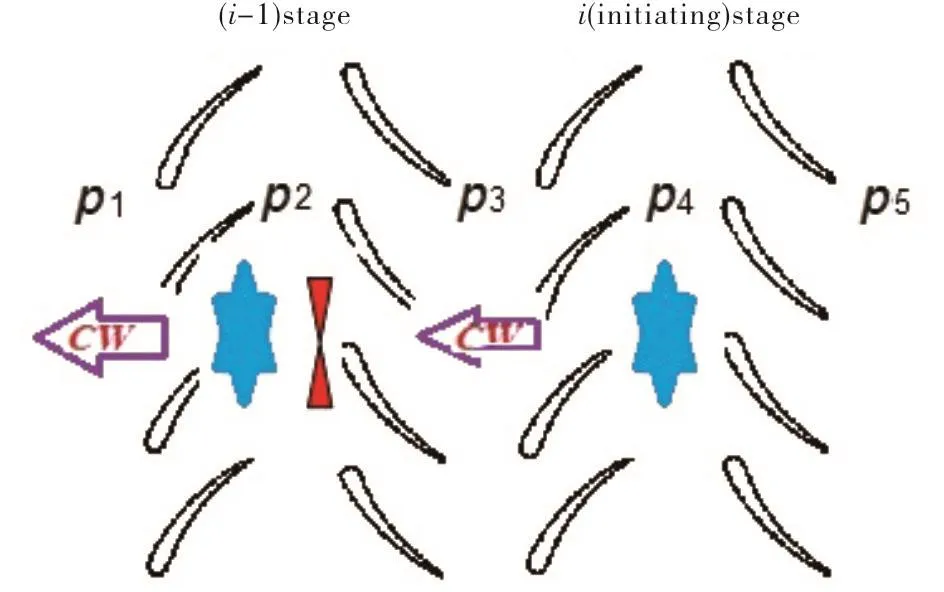
Fig.12 Dynamic progressive surge model-Stall initiation

Fig.13 Dynamic progressive surge model-Upstream after flow reversal
Initially,theCWis not strong enough to reverse the pre-surge flow velocity of upstream stages.Hence,any reflected shock effect is not applied to the local pressure increase until after the induced velocity of flow behind theCWexceeds the pre-surge flow velocity.Only then is itpossibletogenerateareflectedshockwaveRWatI-(n+1)stage as depicted in Figure 13 in addition to the guillotine closure effect.
The dynamic progressive surge model calculations were done for a 12-stage air compressor from Mazzawy(1980)[4].This compressor was known from experimental results to be initiated by stall at the 10thstage as evidenced by elevated pressures beginning just forward of that stage.Hence the calculation was first done assuming this stall initiation site and compared with available data.The results shown in Figure 14 compare favorably with the experimental data.
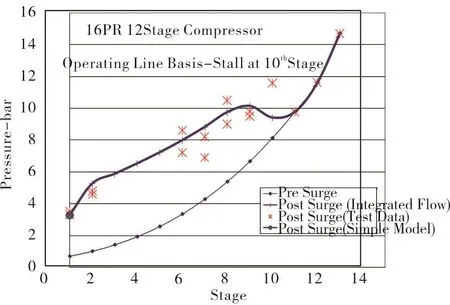
Fig.14 Comparison of surge shock induced over-pressure results with test data:10th stage stall onset
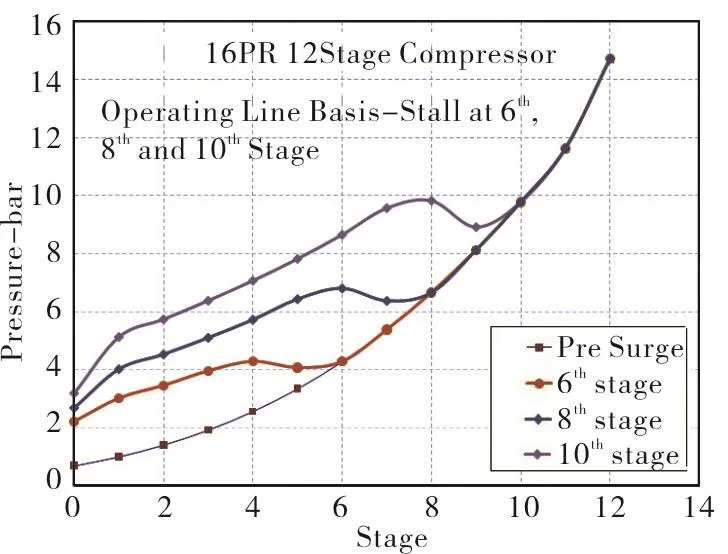
Fig.15 Surge shock induced over-pressures:6th,8th,10thstage stall onset-integrated flow
As a comparison,the post-surge over-pressure(SWfront)at the inlet for the same 12-stage compressor is also calculated by the Simple Model using Equation(6).The result is plotted on Figure 14 as the blue solid circle and is seen slightly under-estimated when compared with the experimental data since it is based on 12 stage outlet pressure,not the 10-stage.
Additionally,cases of surge initiation from 8th stage and 6thstage are also calculated and shown in Figure 15.It can be seen that the inlet overpressure level is progressively smaller as the stall initiation site is shifted to an earlier stage location.Figure 16 shows the flow reversal patterns(progressing from the last stage on the left to the first stage on the right)for cases of surge initiation sites from 10thstage,8thstage,and 6thstage.As one might expect,the flow reversal location is getting progressively closer to inlet as the stall initiation site is shifted to a more forward stage location.
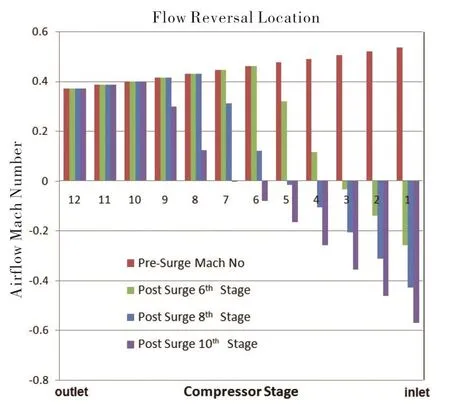
Fig.16 Surge shock induced flows:6th,8th,10thstage stall onset-integrated flow
4 Conclusions
Surge is a complicated phenomenon that is difficult to model yet deserves the attention due to its importance to the safety and reliability of the modern aero-engines.So an indirect approach is attempted by the author analogizing theclassicalshock tubetheory to the transient process from stall to surge.
By this simple yet revealing method,some insights into the transient dynamics of surge are gained and further confirmed by comparison with the test observations from Mazzawy(1980)[4],Day and Freeman(1994)[2]:
1)Surge,at its initial stage,is a local event at cascade within the compressor powered with the adverse pressure energy∆p41suddenly released by a zero throughflow trigger from either a fast rotating spike/stall or other types of sudden blockages;
2)Surge,when first initiated,consists of a pair of compression and expansion waves that are the driving forces for a reverse flow in an inseparable formationCWIRFF-EW;
3)Two methods are introduced for estimating the strength of surge shock wave:the simple method where the over-pressure at the inlet is pre-dominantly dependent on the totalpressure ratiop4/p1and the dynamic progressive surge model that is integrating the local flow stoppage (guillotine) and blade reflection effects. The dynamic model affords structural designers with amethod for defining the dynamic pressure increase associated with engine surge, not only at the inlet, but its distribution within the compression system.
4)Though there are variousroute-to-surge possibilities depending on the different location of surge initiation,it is shown that maximum surge shock strength is from a stage near the exit of the compressor.This corresponds to a higher potential energy release from more stages inside a compressor.
5)This model provides a pedagogic tool in understanding the physics of the transient phase from stall to surge and shock wave propagation. As such it can provide valuable insight to developers of more precise CFD calculations of surge strength in the future.
For the convenience of practical applications,Transient Surge Rules are summarized to describe the dynamics of the transient surge phase. It has not escaped our notice that three Surge Rules somehow resemble the three Newton's Laws of Motion. This could be interpreted as one form of the manifestation of Newton's Laws of Motion in its application to the shock tube and its subsequent application to transient surge phenomena.
With a better understanding of the transient surge provided by this model,it is anticipated that combining these modeling conceptswith CFD simulation of compressorstallcan beestablished so thatfuture generations of dynamic compressors and gas turbines can be designed to be even safer and more predictable than those of today.
5 Acknowledgements
The author would like to thank first Dr.JianAn Yin for exposing the surge problem of the axial compressors during the 40 years long relationship that planted the seed for the target problem of this paper and bore fruits in the joint papers by Huang&Yin(2013,2014)[14,15].The author would also like to thank Prof.Lee Langston for introducing Mr.Mazzawy to the author that led to the collaboration of joint paper by Huang&Mazzawy(2018)[21].Finally,special thanks to Mr.Xiaonong Zhu for introducing the author to this conference and to Ms.Wang Hong who helped and coordinated in the process.
